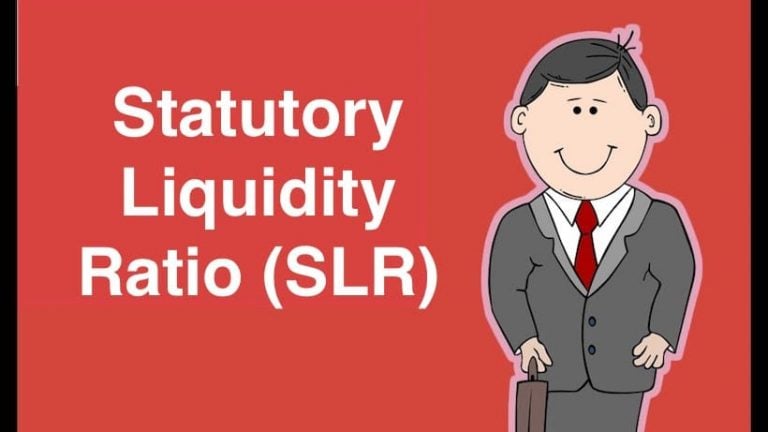Statutory Liquidity Ratio (SLR): In terms of section 24 (2A) of Banking Regulation Act, another tool for controlling credit in the country is available to RBI in the form of Statutory Liquidity Ratio under which, Liquid assets (in the form of prescribed securities by RBI) have to be maintained by all scheduled banks in India.
Statutory Liquidity Ratio (SLR) is the Indian government term for the reserve requirement that the commercial banks in India are required to maintain in the form of cash, gold reserves, government approved securities before providing credit to the customers
The value of such assets will be specified by RBI from time to time and “such assets shall be maintained, in such form and manner, as may be specified in such notification.
SLR has to be maintained by both Scheduled and Non-Scheduled banks in India. Scheduled banks have to maintain SLR in addition to the CRR to be maintained by them under Section 42 of the RBI Act and as far as Non-Scheduled banks are concerned SLR would be in addition to balances to be maintained under section 18 of the Banking Regulation Act.
Liquid assets are those assets which can be converted into cash within a shortest time. The main aim of this statutory obligation for a bank to maintain SLR is to safeguard the interests of the depositors but it has also been used as an effective credit control instrument in the hands of RBI. The category of assets to be maintained by banks need to be specified by RBI, though it was earlier formed part of Banking Regulation Act itself.
The Securities that banks can invest under SLR are as follows:
- a) Cash
- b) Gold Valued at the current market price
- c) Unencumbered securities as under:
- i. Dated Securities of Government of India under market borrowing programme or Market Stabilization Scheme; or
- ii. Treasury Bill of Government of India; or
- iii. State Development Loan securities under their market borrowing programme
- d) Deposit and unencumbered approved securities under Section 11 of the Banking Regulation Act, 1949 to be made with the Reserve Bank by a banking company incorporated outside India; e) Balances maintained by a scheduled bank with the Reserve Bank in excess of the balance required to be maintained under CRR.
- f) Any other securities notified by RBI from time to time.
The procedure for computation of net demand and time liabilities for the purpose of SLR under section 24 of the Banking Regulation Act 1949 is broadly similar to the procedure followed for CRR purpose. On the recommendations of Narasimham Committee, RBI has reduced the SLR from its peak level of 38.5% in 1991 to 27% in 1997 and to 25% in October 1997.
By amending Section 24 of the BR Act, RBI has done away with the minimum level of SLR to be maintained by banks that is 25% but has retained the upper cap level of 40%. And in subsequent years the SLR level to be maintained by banks has been gradually scaled down and as at present it stands at 19.5% level.
If a bank defaults in maintaining SLR, RBI will levy a penalty for that day at the rate of three per cent per annum above the Bank Rate on the shortfall and if the default continues on the next succeeding working day, the penal interest may be increased to a rate of five percent per annum above the Bank Rate for the concerned days of default on the shortfall.
The effect of increasing SLR would result in leaving lesser amount of lendable funds at the hands of a Bank. Therefore this automatically reduces the supply of funds in the economy resulting in deflationary effect. The same effect can also be created by increasing the interest rates of lendable funds. On the other hand reducing the SLR would have the opposite effect of increasing the availability of lendable funds which may lead to an inflationary effect.
Recommended Articles
